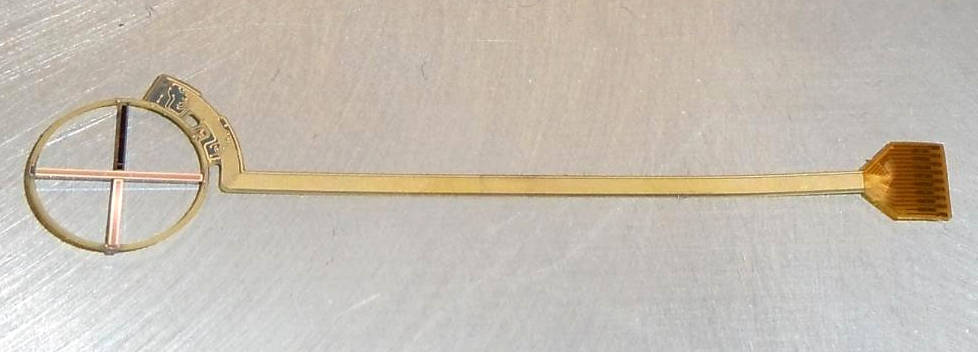Prototype of a pupil width sensor (Photo: M. Hintz, CiS)
The decreasing accommodation ability of the eye with increasing age (presbyopia) can be compensated by visual aids. In case of additional lens opacity (cataract), the removal of the lens and the implantation of an intraocular lens (IOL) are necessary.
However, since this replacement lens is rigid, there is still no accommodative ability after surgery, despite significantly improved vision. Currently, in this case, implantation of multifocal intraocular lenses is also possible, which can partially replace accommodation, but this worsens contrast vision.
The new approach to solve this problem pursued in the BMBF-funded project “Akkosys” is a smart microsystem that is implanted in the capsular bag of the eye instead of an intraocular lens. Important results from basic research come from the Karlsruhe Institute of Technology (KIT). Working autonomously, the microsystem is designed to adjust the focus of an integrated active optical element according to accommodation needs. The focus will be changed by shifting the movable lens of a three-lens system (triple optics).
To detect the need for accommodation, the so-called pupillary near reflex must be measured. For this purpose, the CiS Research Institute is currently developing an optical sensor system that measures the pupil diameter and simultaneously the total brightness. From these signals, input control variables are derived for the actuator-based lens system.
The optical sensor system is based on powerful, only 500 µm wide photodiodes, which are arranged crosswise around the center of the optical axis. For contacting these tiny detectors, only extremely small contacts of 100 µm width are available at a distance of only 40 µm on a polyimide ring. In addition, this ring is equipped with further components for signal preprocessing. Using flip-chip technology, the photodiodes must be aligned and mounted with high precision in the x-y-z direction. Even displacements or tilts of the filigree components of 20 µm (corresponding to about 1/5 of the thickness of a hair) can result in the sensor array no longer being optimally positioned in the optical axis or contact reliability no longer being guaranteed.
At COMPAMED 2013, the CiS Research Institute and its partners will show prototype components on a scale of 2:1. Until an implantable system is available, a number of scientific and technological challenges still need to be solved on the sensor side, such as the further miniaturization of optical components, the fabrication of complex monolithic photodiode structures in the silicon wafer process, and the integration of signal processing.
Collaborative partners and participating institutions are:
- Karlsruher Institut für Technologie, Institute for Applied Computer Science
- Friedrich-Schiller-Universität Jena, Institute for Applied Physics
- CiS Forschungsinstitut für Mikrosensorik und Photovoltaik GmbH
- Fraunhofer-Instituts für Angewandte Optik und Feinmechanik, Jena
- Universität Tübingen, Department of Ophthalmology of the Eye Hospital
According to the WHO (2010), clouding of the natural lens of the eye or cataract (“cataract”) is the most common cause of blindness worldwide; in Germany, this figure is only 1.2% thanks to modern surgical techniques. About 650,000 cataract operations are performed annually in the Federal Republic. According to the German Ophthalmological Society, there are almost 10 million cataract sufferers.
 The research project “AKKOSYS” is part of the project “KDOptiMi20” in the BMBF program “Spitzenforschung und Innovation in den neuen Ländern” (No. 16SV5474).
The research project “AKKOSYS” is part of the project “KDOptiMi20” in the BMBF program “Spitzenforschung und Innovation in den neuen Ländern” (No. 16SV5474).
CiS will show current research results at COMPAMED 2013, in hall 8a, booth H23.1




